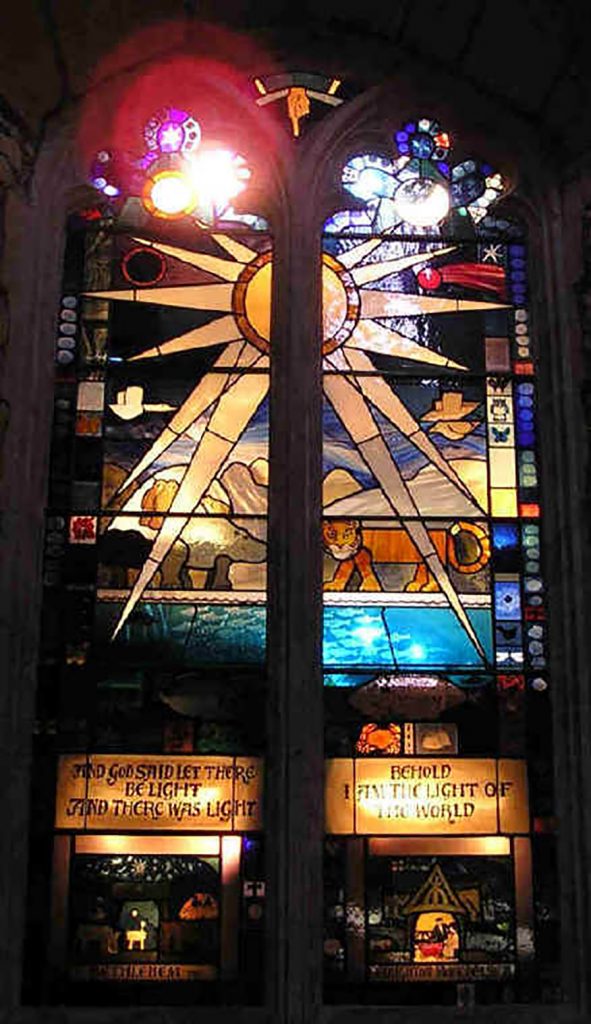To celebrate and mark the new millennium our Parochial Church Council (PCC) decided to undertake several projects. One of these was the introduction of an upper room in the Vestry, but this meant that there had to be a way of screening the interior glass window between the vestry and the tower.
Our Vicar, Revd Geoff Davis and architect and church member, Keith Blundell thought that a Stained Glass window would be an ideal screen and approached parishioner and internationally known artist, Graham Clarke, to see if he would be willing to prepare a design.
After researching stained glass production and studios, Graham then presented the PCC with a design and quote for the production and installation of the window, including specialist lighting and musical accompaniment. After seeing his draft designs, the PCC had no hesitation in commissioning Graham to produce the window.
As well as designing, Graham spent several days at the studios of Goddard and Gibbs (who are one of Europe’s leading stained glass workshops) selecting and working on the cartoon and selecting pieces of glass.
The window was installed in October 1999 and kept hidden while the sound and lighting aspects were developed ready for the unveiling on the first Sunday in the year 2000. It was unveiled jointly by octogenarian Capt David Roome, long time church and PCC member and Churchwarden and Mikey (the Vicar’s granddaughter).
The PCC paid a total of £18,700 for this project which included the installation of the window and digital music and lighting sequence. Graham Clarke generously gave freely the benefits of his gifts of design and practical work on the window.

